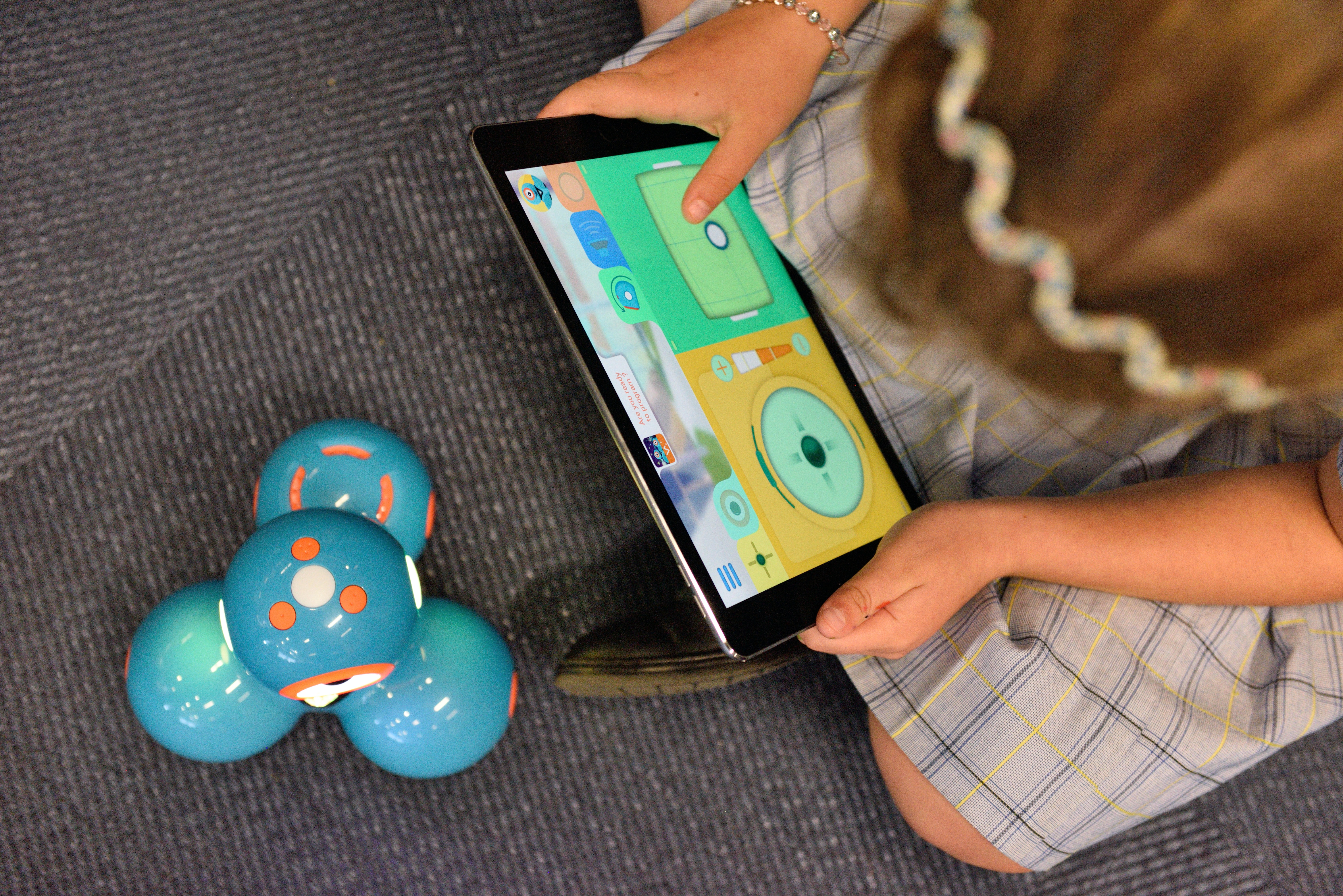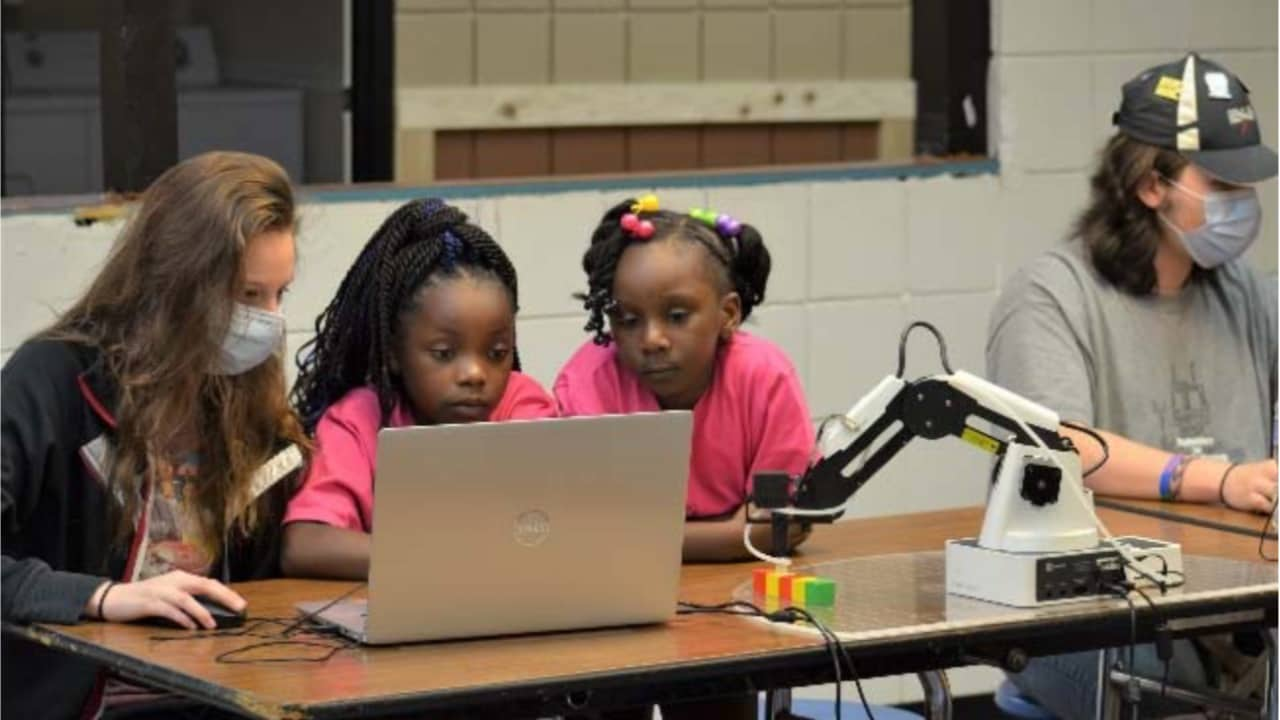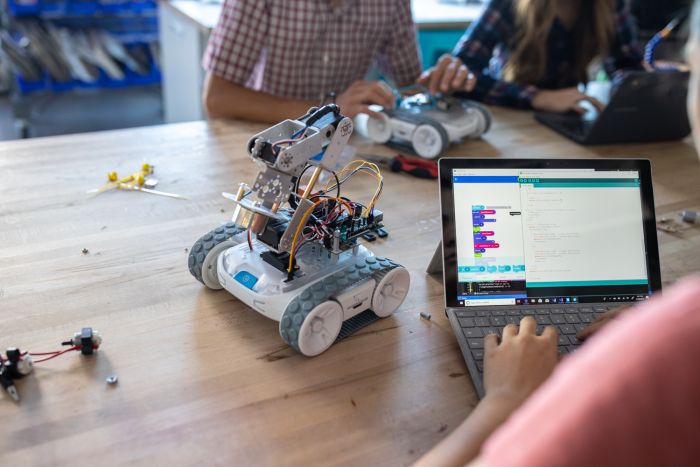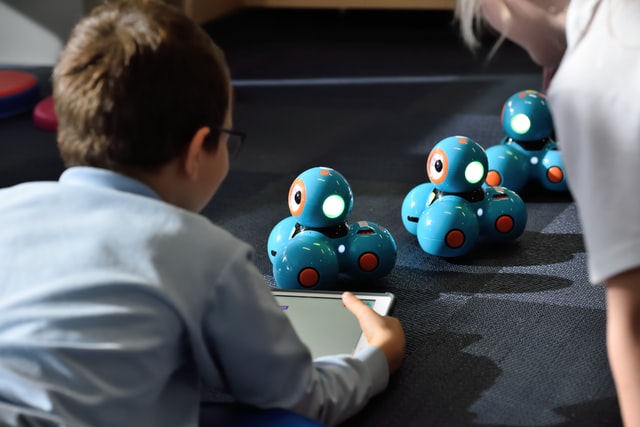How Teachers are Preparing for The Next school Year
 Image source: https://acerforeducation.acer.com/wp-content/uploads/banner-55.jpg
Image source: https://acerforeducation.acer.com/wp-content/uploads/banner-55.jpg
School in a post-coronavirus world will never be the same. Having no choice but to rely heavily on online learning to guarantee continuity of education in a society disrupted by the pandemic has taught lessons to more than just the students.
It is now time for teachers to reflect on the experience of socially distanced school and prepare for the upcoming year and the unique challenges it will present.
Going back to a new normal after such a defining historical event may feel a little like travelling without a road map, but teachers can at least take comfort in the three keywords they can use to orient themselves in this uncharted land: engagement, personalization, interaction.
- 0 Comments
- Oct 26, 2020 10:00:00 AM
- Posted by Natalia Galvis
- Topics: STEM, teachers, students, Technology, STEMchat, Edchat, teaching, online, lessons
The Most Valuable STEM Skills in an Automated World
The professional world is automating at an unprecedented rate. By 2030, 20-40% of young workers' jobs could be automated, putting renewed stress on future-proof skills. While STEM offers security, it's not immune to the automation wave, either.
Many STEM skills and processes are standardized, data-centric and logical, making them ideal for automation. Simultaneously, with tech playing a more substantial role in everyday life, STEM workers are more crucial than ever. In the face of these changing needs, educators and learners alike need to rethink essential STEM skills.
In an automated workforce, the most valuable skills are typically those that are uniquely human. That often involves a focus on soft skills instead of the hard techniques frequently associated with STEM. With that in mind, here are five of the most valuable STEM skills for an automated world.
By Devin Partida
- 0 Comments
- Oct 9, 2020 10:00:00 AM
- Posted by Natalia Galvis
- Topics: EdTech, STEM, Curriculum, teachers, students, Technology, Edchat, Digital Technology, teaching, online, lessons, eLearning
5 Reasons Why Preschoolers Need STEM (And Why It Must Be Easy!)
STEM education, which focuses on Science, Technology, Engineering, and Mathematics, has seen a rise in early introduction in schools. As technical and scientific skills become more sought after in the industry, more schools are encouraging kids from as early as preschool to learn STEM
 Image credit: https://pixabay.com/photos/child-boy-toddler-preschooler-play-1522870/
Image credit: https://pixabay.com/photos/child-boy-toddler-preschooler-play-1522870/
However, some bodies are still not convinced of the importance of STEM in preschool. So, this article focuses on five critical reasons for teaching STEM in the early years.
By Nancy Howard.
- 0 Comments
- Oct 8, 2020 10:00:00 AM
- Posted by Natalia Galvis
- Topics: EdTech, STEM, Curriculum, teachers, students, Technology, Edchat, Digital Technology, teaching, online, virtual learning, lessons, eLearning
21st Century Skills: What Students Need to Succeed in Today’s Society
 Photo by Annie Spratt on Unsplash
Photo by Annie Spratt on Unsplash
“21st Century Skills” (or “Transferable Skills”) are the abilities students need to develop to succeed in our information-based society. Input from teachers, education experts and business leaders, gathered in the Partnership for 21st Century Skills, defined the P21 Framework, a graphic representation to better understand what these competencies are as well as the support systems necessary to produce 21st century student outcomes.
- 0 Comments
- Oct 7, 2020 10:00:00 AM
- Posted by Natalia Galvis
- Topics: EdTech, STEM, Curriculum, teachers, students, Technology, Edchat, Digital Technology, teaching, online, virtual learning, lessons, eLearning
What are the Benefits of Learning To Code as a Child?
Coding is becoming one of the biggest trends to hit education since virtual reality. Because of this, parents and schools all over the globe are interested in teaching children to code. While teaching children to code may not turn them into a billionaire like Mark Zuckerberg, it certainly comes with a lot of benefits. Many of the advantages that I speak of are unknown to general public.
 Photo by cottonbro from Pexels
Photo by cottonbro from Pexels
So instead of watching people jump on the coding bandwagon because we said so, we decided to write an article that discusses the benefits of learning how to code as a child. That way parents and schools can make an informed decision. Believe it or not, some of the advantages that we are about to share may shock you. Well, without further ado, here is our list of the benefits of learning to code as a child.
- 0 Comments
- Oct 6, 2020 10:00:00 AM
- Posted by Natalia Galvis
- Topics: Math, EdTech, STEM, Curriculum, Special Education, teachers, autism, students, Technology, VR, Edchat, Digital Technology, teaching, online, virtual learning, lessons, eLearning
Advantages and Challenges of AI in Education for Teachers and Schools
By Aaron Swain
The future of education is deeply linked with the development of new artificial intelligence technologies and computing. Even while the debate is still ongoing as to what extent AI will replace teachers' presence. AI in the U.S. Education keeps growing at a reasonable rate. It is projected to go as high as 47.5% by 2021.

- 4 Comments
- Oct 5, 2020 10:00:00 AM
- Posted by Natalia Galvis
- Topics: Math, EdTech, STEM, Curriculum, Special Education, teachers, autism, students, Technology, VR, Edchat, Digital Technology, teaching, online, virtual learning, lessons, eLearning
How EdTech Boosts Parent Engagement in Schools
 Photo by Ketut Subiyanto from Pexels
Photo by Ketut Subiyanto from Pexels
It’s always a challenge for many teachers and school administrators to maintain or level up parent engagement in schools. They don’t like attending meetings and school-related activities because they believe they’re not that important. They could always keep themselves up to date by asking their children or fellow parents. However, this shouldn’t be the case because whether they like it or not, it is their responsibility to provide quality education to their children, including having a good relationship with teachers, school principals, and others.
Now, what can schools do to enhance parent engagement? How can they encourage parents to be more active in their children’s lives in school? For many years now, schools have been using Edtech as a way of improving teaching and learning. It’s about time they use Edtech as well to strengthen the participation of parents in schools.
Here are some great ideas for boosting parent engagement through Edtech:
- 0 Comments
- Oct 2, 2020 10:00:00 AM
- Posted by Natalia Galvis
- Topics: Math, EdTech, STEM, Curriculum, Special Education, teachers, autism, students, Technology, VR, Edchat, Digital Technology, teaching, online, virtual learning, lessons, eLearning
Summer Manufacturing Robotics Camps for Children Initiated by Purdue Polytechnic in the United States
On September 7, faculty and students from Purdue Polytechnic teamed with local businesses and tech-focused higher-education institutions to bring lessons in robotics and manufacturing to local youngsters during week-long summer camps

- 0 Comments
- Oct 1, 2020 10:00:00 AM
- Posted by Natalia Galvis
- Topics: Math, EdTech, STEM, Curriculum, Special Education, teachers, autism, students, Technology, VR, Edchat, Digital Technology, teaching, online, virtual learning, lessons, eLearning
Creating Online Clubs for Students During Remote Learning
A teacher who sponsors a coding club shares how it helps students meet peers with similar interests and feel less alone while learning at home.

- 0 Comments
- Sep 30, 2020 10:00:00 AM
- Posted by Natalia Galvis
- Topics: Math, EdTech, STEM, Curriculum, Special Education, teachers, autism, students, Technology, VR, Edchat, Digital Technology, teaching, online, virtual learning, lessons, eLearning
Helping Students with Autism Navigate a Socially Distanced Classroom
Some well-planned strategies can help students with autism thrive as school resumes--even with social distancing measures in place.
 Photo by Michał Parzuchowski on Unsplash
Photo by Michał Parzuchowski on Unsplash
- 0 Comments
- Sep 29, 2020 10:00:00 AM
- Posted by Natalia Galvis
- Topics: Math, EdTech, STEM, Curriculum, Special Education, teachers, autism, students, Technology, VR, Edchat, Digital Technology, teaching, online, virtual learning, lessons, eLearning
Relevant Posts
Popular Posts
Subscribe to Email Updates
-
I Want To Learn MoreADDITIONAL INFORMATION


 Photo by
Photo by 